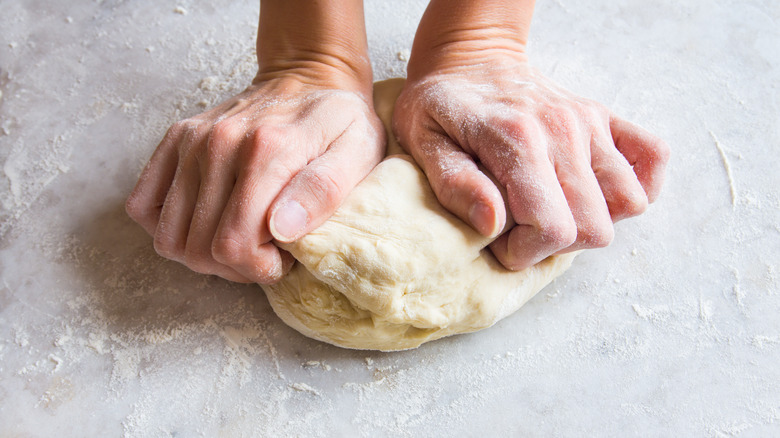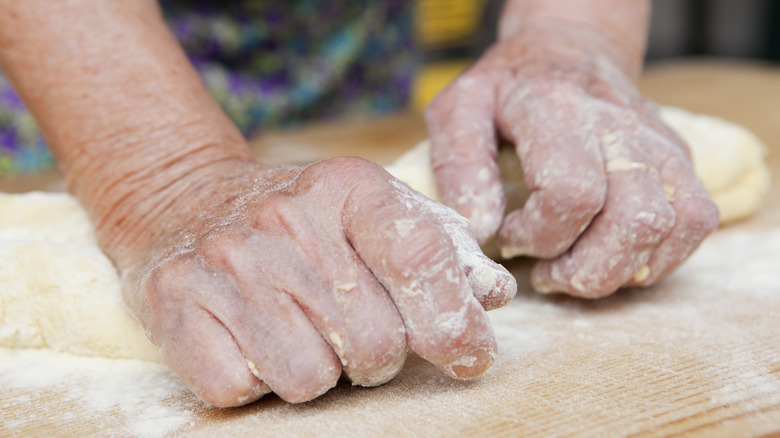The Fraisage Method Will Forever Change The Way You Make Pie Crust
There's something artful about the perfectly flaky pie crust. But, whether you're aiming to bake pies, tortes, or morning pastries, achieving that irresistible layered crunch can seem like an elusive chore. Leave it to the French to figure out how to create the flakiest crusts without needing to add extra shortening or ingredients. The technique is called fraisage, and it helps the dough come together in a way that is both satisfyingly buttery and crumbly once baked.
Typically, making pie crust calls for cutting cold butter directly into flour by using a pastry cutter or food processor; the idea is to break the fat into small pieces and add cold water as the dough slowly comes together, notes King Arthur Baking. With fraisage, however, all the ingredients are piled onto a floured surface, and you use the heel of your hand to push the butter into the flour, building streaks of fulsome deliciousness throughout the dough.
Get handsy
Have Knives, Will Cook insists fraisage is key to mastering if you're looking to create crispy, flaky baked goods. According to King Arthur Baking, the trick is to cut cold butter into 0.5-inch cubes. Then, once you've finished working the dough across your floured surface, you can use a knife to flip it over and press it again. You'll know your work is finished when the dough is shaggy but still sticks together.
If you're not thrilled about getting your hands dirty, you can use a rubber spatula, but be careful not to overwork the dough. Crafty Baking instructs the coldness of the butter or fat you use in the dough recipe will impact the crusts' flakiness; butter that has been melted before it is baked will result in a flat, greasy pie. Work quickly, wrap the dough in plastic, and refrigerate for at least a half hour before shaping and baking.

